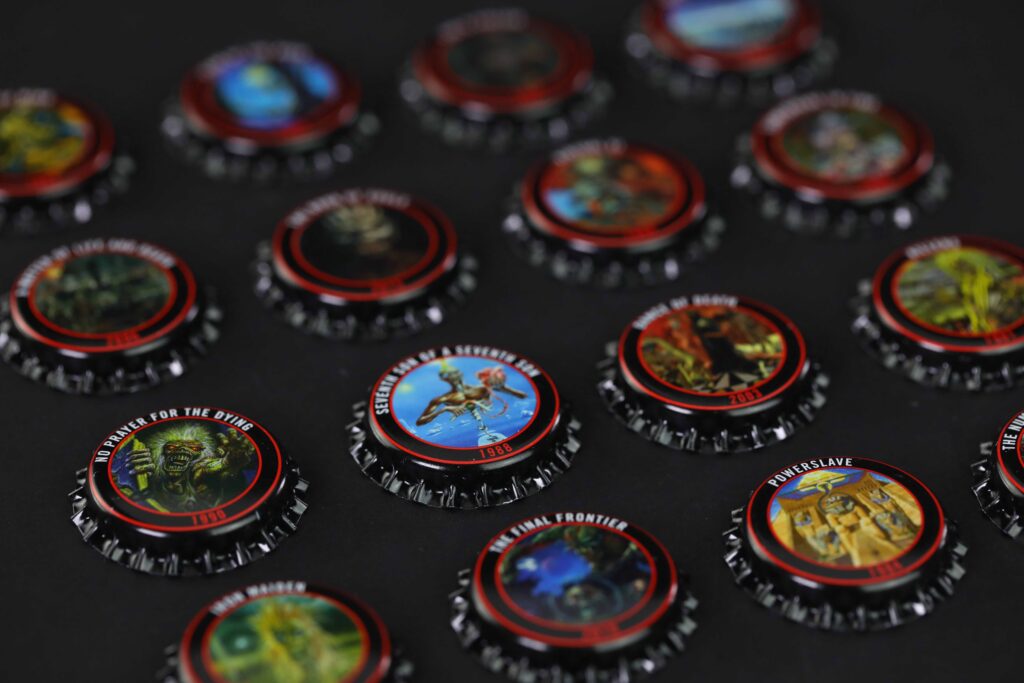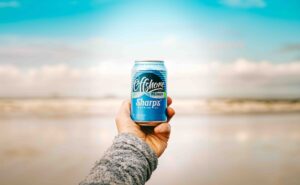Crown caps have become an iconic feature of beer around the world. Giving opportunity for increased brand recognition, and even a collectable item for some consumers. But where did the crown cap begin and what is the history behind crown caps? Here is Joshua Webster from Croxsons to explain more.
Before the invention of crown caps, the average life of beers and soft drinks was short. Often sealed with corks, these seals lacked reliability and often had leaks of both liquids and carbonated gases. Then, in 1892, the crown cap was patented by William Painter, and it revolutionised the beer industry.
William Painter was an American mechanical engineer and worked with manufacturers to develop a universal neck for all glass bottles. After registering the patent, William Painter founded the Crown Cork and Seal Company, in Baltimore (now Crown Holdings). Here, he dealt with closing drinks using only his new, innovative cap.
Inexpensive to produce, it was composed of metal with a knurled end in the form of an inverted crown (hence the name crown cap). To prevent any leakage of liquid, the cap was covered with a thin cork disc and a film sealing the contents of the bottle.
This was to avoid the direct contact between liquid and the metal which could have affected the purity and taste of the beverage. The reliability of the seal allowed breweries to distribute beer over longer distances due to its extended shelf life.
In the early 20th century, William Painter’s cork crown quickly became the preferred sealing method due to its reliability and ability to preserve the freshness and carbonation of beer. However, with prohibition in 1920, the focus of the crown cap was shifted to carbonated soft drinks. With the end of prohibition, came the wide use of crown caps across the drinks market.
It originally had 24 teeth, along with a cork seal with a paper backing to stop the liquid and metal from touching. Since, the cork disc has been replaced with PVC material and the cap height has been shortened. In the 1930s, testing was carried out to determine the optimal number of teeth, as the 24 teeth, that was standard, made the cap too tight and difficult to open.
The current version has 21 teeth and is international standard. The standardisation of the crown cap design with 21 teeth has allowed for compatibility and ease of use across different bottle sizes and brands.
The crown cap provides more than just a secure seal for breweries, but also a unique branding opportunity. By customising design, colour, and logo, breweries can establish their brand identity to help increase visibility and brand recognition.
This can be a useful tool for products placed in supermarkets, with height of display varying. The association of specific crown cap designs to consumers favourite breweries helps to create a familiarity and trust, which has helped to enhance brand loyalty for beer brands.
Croxsons previously worked on a project with Robinsons Brewery for their Trooper – Light Brigade, a product to raise money for Help for Heroes. The company challenged our printing team with an intricate design on what is a small surface area. Supplying a 3-colour printed crown cap that celebrated the albums of Iron Maiden, with each album’s original artwork replicated on the face of a crown. This branding, with 16 different designs, helped provide a collectible item that stood out on the shelf.
As well as brand recognition, the easy-to-use design of a crown cap has benefited consumer experiences. There is something special about the sounds of a crown cap being popped off a beer bottle with a whisp and a fizz.
In 2024, storytelling is playing more of a role in building a strong brand, having a uniquely designed crown cap can help you build an experience for your customers and increase brand loyalty. Whether you are looking for a complex design, like the Robinsons caps above, or you just want your logo printed.
‘Premiumisation’ and quality are areas that brewers can focus their attention to maximise potential sales uplift. Customers want a more premium experience and if you currently can your brews, then glass packaging can deliver exactly what your customers want when it comes to a special brew run.









